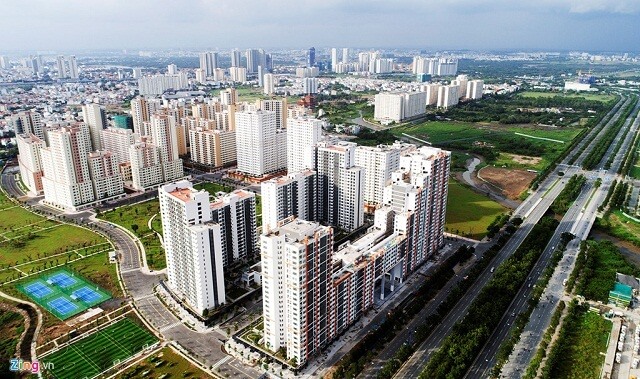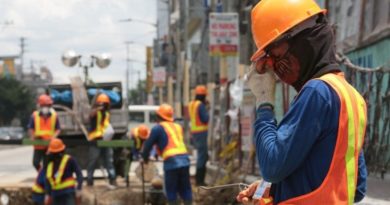BIZ-ECONOMY / PROPERTY: HÀ NỘI – CBRE: Hà Nội to have high supply of retail space this year
| Retail space is expected be abundant this year in Hà Nội with a total of 157,000 sq.m coming from eight projects under development, according to the CBRE’s Real Estate Market Outlook in Việt Nam.– Photo zing.vn |
.
.
HÀ NỘI – Retail space is expected be abundant this year in Hà Nội with a total of 157,000 sq.m coming from eight projects under development, according to the CBRE’s Real Estate Market Outlook in Việt Nam.
Under the outlook released recently, this is the most new projects ever planned for a single year. Most of these new projects are located in fast developing residential areas with good infrastructure and which are expected to attract retailers and consumers.
Despite this new supply causing pressure on the vacancy rate, the average market rent is still expected to remain relatively stable or even to slightly improve, according to CBRE.
Malls as a component of residential complexes will continue to thrive, thanks to a high level of supply in the condominium market. Eight out of 12 future projects up to 2020 are retail podiums. This format has advantages such as having resident customers and increased traffic due to the residential component, providing added services and amenities and improving the image for the project. However, suitable scale, design and parking spaces will be key factors for successful malls, it said.
Now, only 7 per cent of total retail supply in Hà Nội is located in the central business districts (CBDs). Due to limited land, there has been no new supply since 2013, causing retailers to find alternatives in shop houses.
The introduction of walking streets around Hoàn Kiếm Lake has drawn more visitors to the area, creating higher demand for more space. However, there is still no expected future supply. Hence, the CBD is predicted to continue to perform well with a low vacancy rate and strong rental rates. Retailers are also likely to look for creative solutions such as the conversion of old buildings by Hoàn Kiếm Lake into modern retail space, one of which is now the location for the first McDonalds in Hà Nội.
Meanwhile, the majority of current supply is located in different clusters in non-CBD areas, in residential areas or other areas with good access to population centres, CBRE said.
In the next few years, the Hà Nội retail market is likely to follow the expansion trend of residential and infrastructure developments. The areas along Ring Road 3 and the two under-construction metro lines including the west, southwest, and south will be hotspots with nearly 375,000 sq.m of retail space coming online over the next three years. Significant projects include Aeon Mall Hà Đông in addition to several shopping centres by Vincom and FLC. The north of the city is also quickly evolving with a new project announced earlier this year to be developed by Lotte Group, a Korean developer.
Particularly, an emerging CBD will soon be formed in the western area of Hà Nội. The area covering Cầu Giấy, Từ Liêm, and Thanh Xuân districts is currently the largest retail cluster in non-CBD, accounting for 41 per cent of total supply. It will continue to remain its position in the next few years with 83,300 sq.m future supply in the pipeline.
Largest foreign property assets in VN
Also at CBRE’s Real Estate Market Outlook in Việt Nam, it said Singapore, South Korea, Malaysia, Japan and Hong Kong are the top five countries with the largest real estate assets in Việt Nam to date.
Investors from these countries, including both developers and funders, have remained active in Việt Nam, said CBRE, adding that investors from Thailand, mainland China and the US are catching up quickly and are expected to remain active in future.
CBRE said Vietnamese players have historically been active as sellers, while foreign investors were seeking buying opportunities. In 2017, however, Vietnamese investors dominated buying, leading to a situation where both local and international investors competed for limited available stock, especially income-producing assets. This situation is expected to persist in 2018, especially as Vietnamese buyers can use the advantage of local market expertise to shorten the deal-closing process.
There were a limited number of transactions of income-producing assets recorded during 2017, indicating a lack of available stock. Yield expectations have also tended to compress, a trend that has not been observed in the past few years.
Given positive rental growth prospects across the office, retail, hotel and industrial markets, it is expected that the competition to acquire commercial properties will intensify as pricing expectations are trending up on the back of limited investment stock, CBRE said.
The lack of stock is encouraging investors to form joint ventures with domestic groups for development projects. Property funds will also remain active in buying shares of major domestic developers. – VNS / Viet Nam News / Update: March, 26/2018 – 21:59 / All photographs, news, editorials, opinions, information, data, others have been taken from the Internet ..aseanews.net | [email protected] | For comments, Email to contributor | ROVICH LAND / [email protected]









